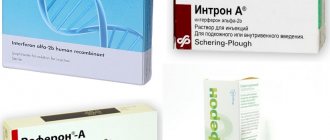Indications for use:
In ophthalmology
- acute and subacute conjunctivitis;
- blepharitis;
- blepharoconjunctivitis;
- keratitis;
- keratoconjunctivitis;
- bacterial corneal ulcer;
- chronic dacryocystitis;
- meibomite (barley);
- infectious eye lesions after injury or foreign bodies;
- preoperative and postoperative prevention of infectious complications in ophthalmic surgery.
In otorhinolaryngology
- otitis externa;
- treatment of postoperative infectious complications.
"CIPROFLOXACIN": composition
The broad-spectrum drug is an effective antimicrobial drug belonging to the group of fluoroquinolones.
In tablet form it can have different shades, patterns and coatings. External parameters depend on the manufacturer and dosage of the active substance. In addition, it can be produced in the form of a solution, dry concentrate and drops.
Two types of drops based on this drug are available:
Ophthalmic at a concentration of 0.3% is a transparent yellowish liquid packaged in bottles or polyethylene droppers with a volume of 1 ml, 1.5 ml, 2 ml, 5 ml or 10 ml. Each individual cardboard package contains 1 bottle, 1 or 5 dropper tubes.
Eye and ear drops at a concentration of 0.3% are also a yellowish transparent liquid with a packaging similar to the eye solution.
The medicinal solution contains the active substance ciprofloxacin, presented in the form of hydrochloride monohydrate in a dosage of 3 mg (0.3% of the total volume).
Additional components include:
- mannitol;
- edetate disodium;
- sodium acetate;
- benzalkonium chloride;
- acetic acid solution;
- aqueous injection solution.
Directions for use and dosage:
- In ophthalmology
For mild to moderate infection, ciprofloxacin is instilled 1-2 drops into the conjunctival sac of the affected eye every 4 hours, for severe infection - 2 drops/hour. After the condition improves, the dose and frequency of instillations are reduced.
For a bacterial corneal ulcer, the drug is instilled 1 drop every 15 minutes for 6 hours, then 1 drop every 30 minutes during waking hours. On the 2nd day, instill 1 drop/hour during waking hours. From the 3rd to the 14th day, instill 1 drop every 4 hours during waking hours.
- In otorhinolaryngology
Before using the drug, you should carefully clean the external auditory canal. The solution should be at room temperature (or body temperature) when used to avoid vestibular stimulation. The drug is instilled into the external auditory canal, 3-4 drops 2-4 times a day or more often, depending on need. After instillation, the patient should lie on the side opposite the affected ear for 5-10 minutes.
In isolated cases, after local cleansing, a cotton swab moistened with a solution of ciprofloxacin can be placed in the ear, in the external auditory canal. The tampon can remain in the external auditory canal until the next procedure.
The duration of the course of treatment should not exceed 5-10 days. In some cases, treatment may be extended if the local flora is sensitive.
Ciprofloxacin-Optic
A broad-spectrum antimicrobial agent, a fluoroquinolone derivative, inhibits bacterial DNA gyrase (topoisomerases II and IV, responsible for the process of supercoiling of chromosomal DNA around nuclear RNA, which is necessary for reading genetic information); disrupts DNA synthesis, growth and division of bacteria; causes pronounced morphological changes (including cell wall and membranes) and rapid death of the bacterial cell.
It has a bactericidal effect on gram-negative organisms during the period of rest and division (since it affects not only DNA gyrase, but also causes lysis of the cell wall), on gram-positive microorganisms - only during the period of division.
Low toxicity for the cells of the macroorganism is explained by the absence of DNA gyrase in them. While taking ciprofloxacin, there is no parallel development of resistance to other antibiotics that do not belong to the group of gyrase inhibitors, which makes it highly effective against bacteria that are resistant, for example, to aminoglycosides, penicillins, cephalosporins, tetracyclines and many other antibiotics.
Gram-negative aerobic bacteria are sensitive to ciprofloxacin: enterobacteria (Escherichia coli, Salmonella spp., Shigella spp., Citrobacter spp., Klebsiella spp., Enterobacter spp., Proteus mirabilis, Proteus vulgaris, Serratia marcescens, Hafnia alvei, Edwardsiella tarda, Providencia spp. , Morganella morganii, Vibrio spp., Yersinia spp.)
, other gram-negative bacteria
(Haemophilus spp., Pseudomonas aeruginosa, Moraxella catarrhalis, Aeromonas spp., Pasteurella multocida, Plesiomonas shigeoides, Campylobacter jejuni, Neisseria spp.)
;
some intracellular pathogens (Legionella pneumophila, Brucella spp., Chlamydia trachomatis, Listeria monocytogenes, Mycobacterium tuberculosis, Mycobacterium kansasii, Corynebacterium diphtheria)
;
gram-positive aerobic bacteria: Staphylococcus spp.
(Staphylococcus aureus, Staphylococcus haemolyticus, Staphylococcus hominis, Staphylococcus saprophyticus), Streptococcus spp. (Streptococcus pyogenes, Streptococcus agalactiae). Most staphylococci resistant to methicillin are also resistant to ciprofloxacin.
Sensitivity Streptococcus pneumoniae, Enterococcus faecalis, Mycobacterium avium
(located intracellularly) moderate (high concentrations are required to suppress them).
The following are resistant to the drug: Bacteroides fragilis, Pseudomonas cepacia, Pseudomonas maltophilia, Ureaplasma urealyticum, Clostridium difficile, Nocardia asteroides.
Ineffective against Treponema pallidum.
Resistance develops extremely slowly, since, on the one hand, after the action of ciprofloxacin there are practically no persistent microorganisms left, and on the other hand, bacterial cells do not have enzymes that inactivate it.
Mechanisms of resistance development
The development of resistance to fluoroquinolones, in particular to ciprofloxacin, is mediated through changes in genes encoding at least one of 4 mechanisms:
1. change in the structure of target enzymes (DNA gyrase and topoisomerase IV) - enzymes involved in the synthesis of cell DNA;
2. violation of cell wall permeability;
3. active removal of the drug from the cell (increased activity of efflux pumps);
4. Plasmid-mediated changes in the functioning of aminoglycoside 6-N-acetyltransferase.
Contraindications to ciprofloxacin drops
The main contraindication is an allergy to a component included in the eye drops. This also includes the viral form of keratitis. Use in children under 12 months is strictly prohibited.
The drug should be used with extreme caution in patients with impaired cerebral circulation and damage to blood vessels.
Before starting treatment, it is important to familiarize yourself with the storage rules for the drug.
A serious disease that affects the posterior part of the choroid of the visual organ is chorioretinitis of the eye.
Analogues of "CIPROFLOXACIN" in tablets:
The described drug is the most affordable, so it is quite difficult to find analogues whose price is lower than the cost of Ciprofloxacin. However, if necessary, you can try replacing the drug with one of the following medications:
Normax . Norfloxacin-based drops intended for the treatment of infections caused by aerobic bacteria. The cost of this drug at the pharmacy is 150 rubles;
Norfloxacin is another drug based on the same active ingredient. The spectrum of action is similar to Ciprofloxacin. Price - 175 rubles;
Ciprolet is an analogue of Ciprofloxacin, a solution of the same active substance with an absolutely identical mechanism of action. Cost in pharmacies - 60 rubles;
Tsipromed . A local antibacterial drug, available in the form of a 3% solution for the eyes. Effective against most bacteria that cause inflammation in the eye. Price - 150 rubles.
Indications
The drug is recommended for use for various bacterial infections of the eyes and ears, according to the instructions. The purpose of the drops is shown:
- For conjunctivitis, blepharitis, after traumatic injury to the eye, accompanied by an acute inflammatory reaction.
- As an effective means of therapy and prevention of infections before and after ophthalmic surgery.
- For the treatment of inflammatory diseases of the external ear.
- Used for the treatment of infectious complications after operations on the auricle and ear canal.
The main condition for the use of the drug is the sensitivity of pathogenic microflora to Ciprofloxacin. Like any antibacterial drug, it is advisable to prescribe it after receiving the results of culture of the inflammatory discharge on nutrient media.
Can it be given to children?
Ciprofloxacin can be used in children over one year of age as safely as in adults.
Studies were conducted at the ophthalmology hospital in children of different ages (over one year old). During which, it was found that the frequency of side effects is no more frequent than in adults. Considering the increasing trend of eye diseases caused by gram-negative flora resistant to many antibacterial drugs, it was decided to use ciprofloxacin in children over one year of age. The rarity of side effects after using ciprofloxacin eye drops is explained by the fact that when applied topically to the eyes, most of the medicine is absorbed into the eye tissue and only a small part enters the blood. This concentration is not enough to cause side effects.
Nursing mothers should stop breastfeeding during treatment. The drug interferes with the formation of joints in infants.
Pregnant women should also not take the drug due to a possible teratogenic effect.
Reviews
Numerous reviews of treatment with Ciprofloxacin eye drops indicate their high effectiveness.
Marina:
“The doctor prescribed this drug to me when symptoms of keratitis appeared. I can say that Ciprofloxacin is truly highly effective. This remedy quickly relieved the symptoms of the disease. I didn’t notice any unwanted symptoms.”
Alyona:
“I used Ciprofloxacin for the development of acute conjunctivitis. Everyone knows what unpleasant symptoms accompany this disease. So, already on the second day of using the product, my condition noticeably improved. I really liked this medicine."
Sergey:
“I used to suffer very often from the appearance of styes in my eyes. Then the doctor advised me to use Ciprofloxacin during an exacerbation. Now I use the drops at the first symptoms. This helps me not to trigger the disease.” Ciprofloxacin eye drops are highly effective. This antibacterial agent has a wide spectrum of action and helps to cope with a wide variety of eye pathologies. It is very important to strictly follow the instructions.
"CIPROFLOXACIN": reviews
I was hospitalized after an eye injury. There was severe inflammation and swelling, and they wanted to operate. My attending physician decided to instill ciprofloxacin to relieve the effects of inflammation, just 3 days and the eye was already visible, the redness and swelling had gone away, the eye had completely opened. It turned out that a foreign body had gotten inside. After it was removed, the drops were continued for another 2 weeks - the eye was preserved, vision was normal.
I had conjunctivitis, and I actually had to soak my eyes every morning. Pain, tears, constant pain in the eyes, swelling. I consulted with a local ophthalmologist from the clinic, he advised me to take ciprofloxacin. I saw the price at the pharmacy and thought he was just kidding me. The price of my torment is 40 rubles! I bought it, used it for 5 days and then three more, as the instructions said. The conjunctivitis is completely gone!











